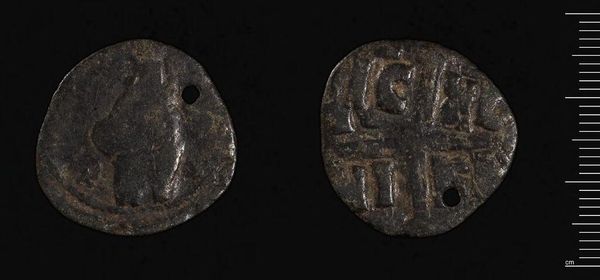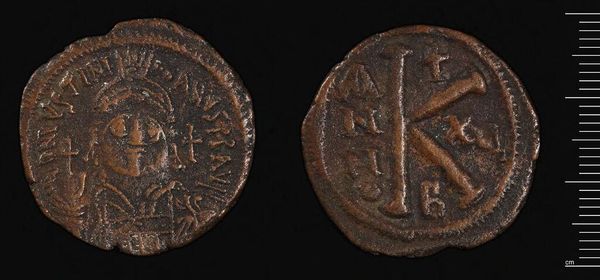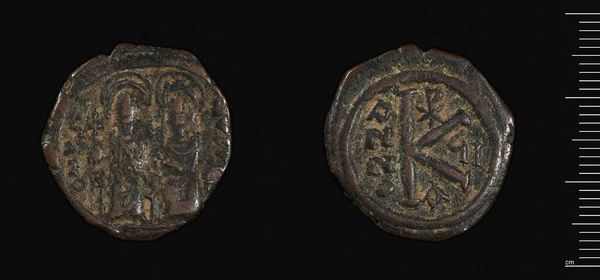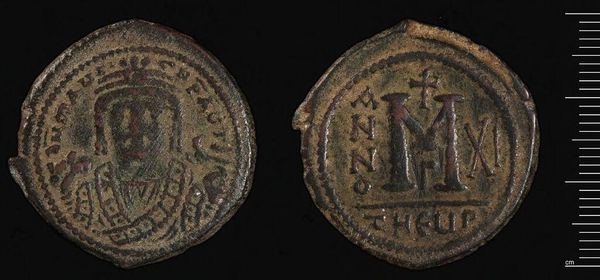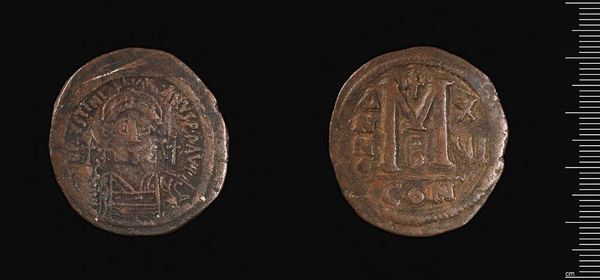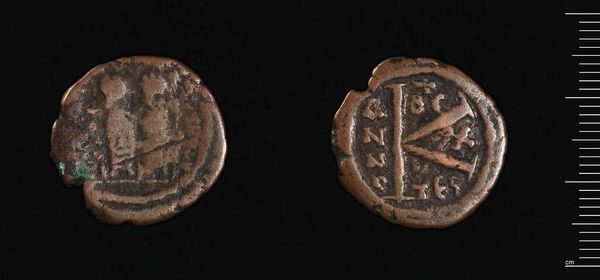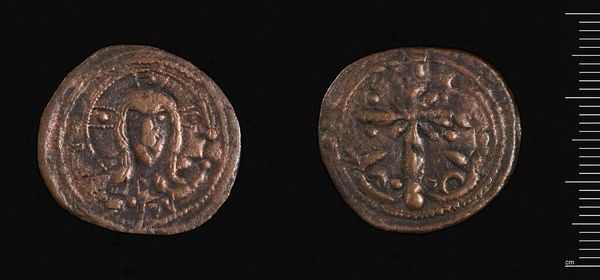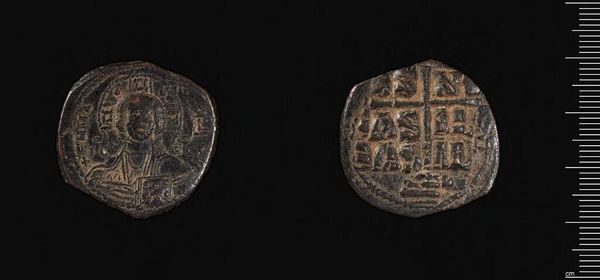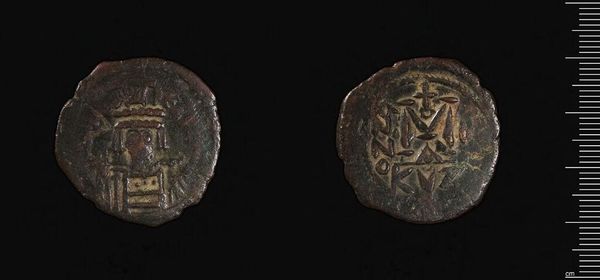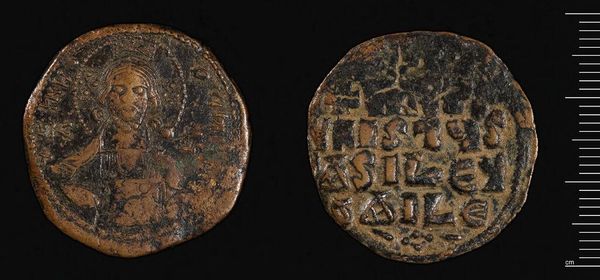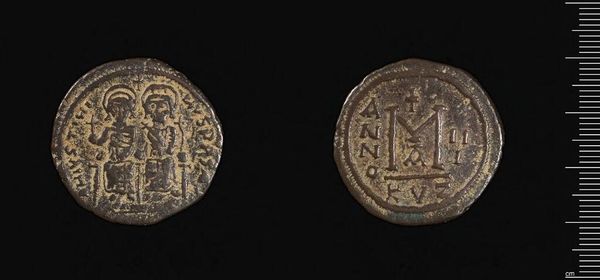
Coin of Maurice Tiberius c. 595 - 596
Dimensions: 11.35 g
Copyright: CC0 1.0
This coin, commissioned by Maurice Tiberius, is a small but significant artifact, weighing just over 11 grams. Its copper materiality speaks volumes about its function and the society that produced it. Unlike precious metals, copper was used for everyday transactions, placing it firmly in the realm of common exchange. The process of striking these coins was not a simple one; it involved skilled metalworkers, die engravers, and a coordinated system of production. The very act of minting these coins was an exercise of imperial power, stamping the emperor's image and authority onto a medium of exchange. The coin's design, though small, is rich with symbolism. The emperor’s portrait and the inscriptions aren't merely decorative, but tools of political and economic control. By understanding the material and the making of this coin, we gain insight into the economic system, technological capabilities, and social structures of the Byzantine Empire. It reminds us that even the most utilitarian objects are embedded with cultural meaning and historical significance.
Comments
No comments
Be the first to comment and join the conversation on the ultimate creative platform.
